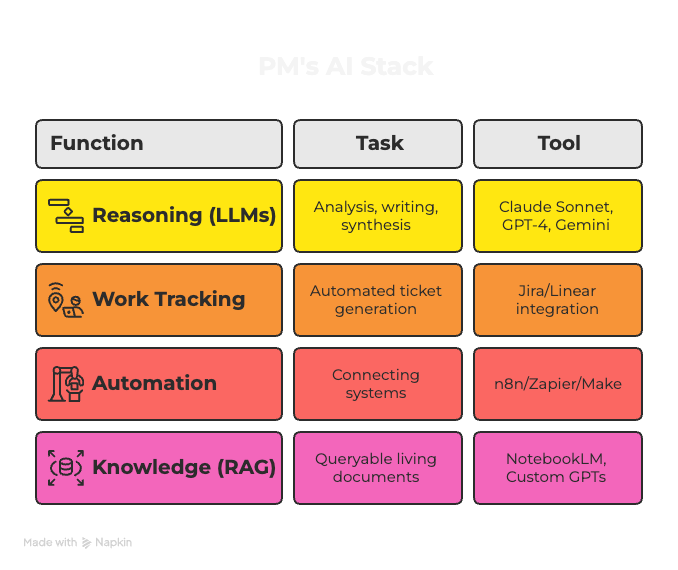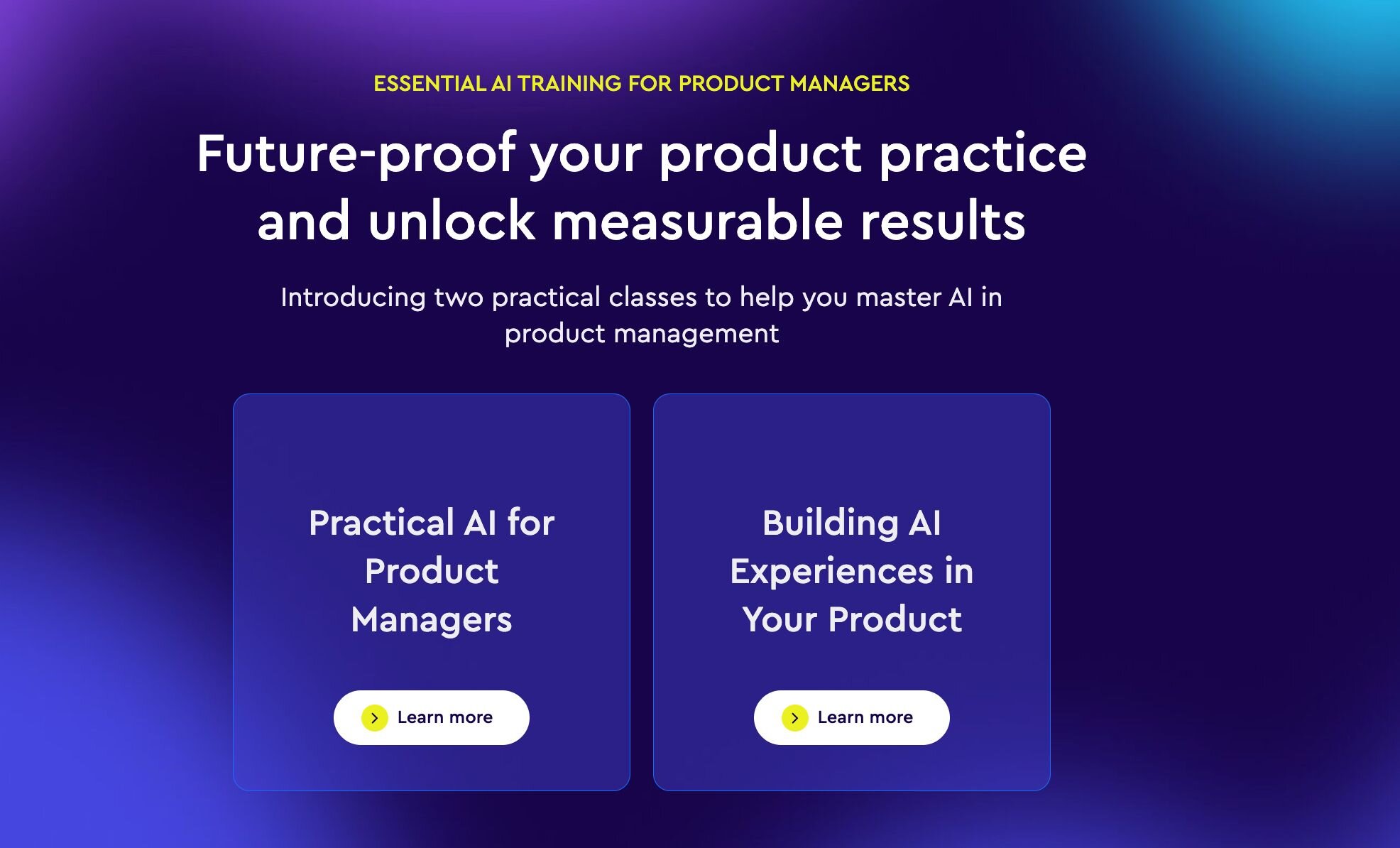Generative AI continues to transform industries by generating content, insights and recommendations. However, Generative UI is taking AI a step further by shaping the parts of the product users see and interact with every day. ChatGPT and other prompt based tools are great, but they often fall short at facilitating action. In this article, we’ll explore the potential of Generative UI, its challenges, and practical steps for product managers.
What is Generative UI and why does it matter?
Generative UI is an AI-powered approach that builds or adjusts interfaces on the spot, using real-time data and context. Unlike traditional UIs with fixed designs, GenUI has the freedom and flexibility to fit each user’s needs. It can draw on a library of existing components, or it may generate unique elements as needed—allowing the interface to adjust seamlessly to what users need at any moment. For product teams, this opens new opportunities to create responsive, user-centred interfaces without extensive planning.
It can be viewed from two angles:
- No-code platforms: A behind-the-scenes tool for product managers to build new interfaces relatively quickly without needing engineering resources. Unlike typical design tools, GenUI is connected to a backend, allowing user interactions to trigger real functionality within the product.
- Hyper-personalisation: An approach where GenUI can be used to create or modify individual user journeys within a product or workflow, to reduce friction and/or increase engagement.
1: Doing more with less — no-code tools
No-code platforms broaden the skill set of product managers without requiring years of training. This shift has significant implications for both product and design teams:
- Empowering non-technical teams: No-code platforms enable Product Managers to communicate concepts more clearly, reducing reliance on Design and Engineering. This allows designers and engineers to concentrate on more complex tasks.
- Faster iteration cycles: These platforms could be invaluable during user research sessions, allowing teams to showcase functional interfaces, and generate alternatives in real time. Consolidating what typically requires multiple feedback rounds into a shorter time frame.
However, the benefits of these tools do come with challenges. They often require upfront investment in training, and the GenAI landscape is rapidly evolving. Advanced use cases may stretch the capabilities of these platforms. So the market leading tools now might not be the same next year.
2: Hyper- personalisation and streamlined journeys
One of the most impactful applications of GenUI is hyper-personalisation—tailoring interfaces based on individual user preferences, behaviours, and context. Today’s users expect personalisation, but GenUI supersedes this by enabling significant changes beyond content. By embracing the principles of the Jobs To Be Done (JTBD) framework, GenUI adapts the interfaces dynamically to users' current tasks, minimising distractions and irrelevant options.
Traditional systems often require admin teams to manage multiple configurations, but GenUI automates this process, presenting thousands of tailored ways to display the same information. Not only does this improve the user experience but reduces manual overhead.
- Tailored experiences for every user:
Websites could shift content, layout, or navigation to suit a user's behaviour, rather than always following a fixed design template.
For example, a large retailer’s website could dynamically adjust the Product Details Page layout. A user shopping for a designer dress might see large images, size guides, and styling suggestions, while a customer buying lipstick would be presented with shade comparisons, virtual try-ons, and ingredients.
- Streamlined user journeys: GenUI reduces friction by hiding or removing steps that are not relevant, highly applicable for tools that support a multitude of functions.
For example, in an insurance claims platform, the UI could adjust based on the type of claim being processed. An agent handling a simple vehicle damage claim would see a streamlined form and key details like vehicle information and repair costs, while a more complex life insurance claim might trigger additional fields for medical history and beneficiary details.
Challenges of GenUI
While the promise of GenUI is exciting, it also introduces complexity. Teams must be mindful of how these personalised experiences affect other functions within the business and other longer term implications.
- Managing complexity:
Hyper-personalisation can create inconsistencies across user experiences, complicating messaging from marketing teams. Support teams might find it hard to troubleshoot issues when each user has a different UI. Branding is important to many organisations, so given GenUI complete free rein of the look and feel might raise concerns.
A starting point would be to devise guidelines the LLM has to follow, whether it’s a style guide, a component library or even a fixed range of templates to choose from. Additionally, investigate how might support agents get better visibility of what the end user sees. It’s essential not to forget the basic product principles around stakeholder engagement.
- UI volatility:
A dynamically changing UI can sometimes create confusion for users, particularly if the interface evolves too frequently. This volatility may lead to inconsistent user experiences, resulting in frustration and disengagement.
To mitigate this, it's essential to strike a balance between dynamic personalisation and stable core features. This is especially critical in industries like banking, where consumer trust is paramount. Customers are increasingly wary of fraudulent activity, and if their banking app frequently changes its appearance—especially if it differs from what their friends see—it could erode that trust. This concern is particularly pronounced among older generations, who often prefer the familiarity of a consistent interface, even if it means sacrificing some efficiency for the sake of certainty. - Cost and learning curve of no-code tools:
No-code tools can be expensive, and mastering them takes time. So whilst you might be saving some Design or Engineering time, and validating concepts more quickly, does that outweigh the cost of training & licensing costs of new tools?
Next steps for adopting GenUI
Here’s how Product Managers can begin their GenUI journey, depending on their level of expertise.
For beginners: Practical first steps
- Evaluate existing tools in your stack
Before investing in new platforms, check whether your existing tools such as Figma have no-code features or plugins available. Experiment with customisation on a low-risk internal project, such as redesigning a dashboard or microsite. - Engage in cross-functional collaboration
Foster collaboration between product, design, and engineering teams early to align on GenUI concept. Run a brainstorming workshop to explore possible pain points or opportunities.
For advanced product managers: Scaling GenUI
- Pilot freemium no-code tools
Use free trials or lower-tier subscriptions of platforms like Blidr or Glide to explore GenUI capabilities before committing to a large investment. Set up a proof of concept for one use case, even if it’s just for an internal project or workflow. It’s important to set success metrics up front if the goal is to unlock budget for more complex use cases. - Establish personalisation guardrails
Once you’ve validated your GenUI approach, collaborate with the wider team to develop a framework that the LLM must follow, such as a fixed component library or modular templates. This can mitigate the risk outlined earlier where interfaces change too radically and end up alienating the users or stakeholders. - Start small
- If GenAI is something you have or can explore in your product domain. Start small and determine a use case in which GenUI could add immediate, measurable value. This could involve creating more accessible interfaces for visually impaired users, or in B2B products look at shortening workflows.
Conclusion
The transition from GenAI to GenUI is a pivotal moment for product managers aiming to enhance user experiences. It empowers teams to design adaptive interfaces that meet individual needs, but it’s not without its challenges. Balancing personalisation carefully with usability is key. Those who commit to GenUI will not only enhance their product offerings but will also become leaders in user-centric design. Start your GenUI journey today and stay ahead of the curve.







